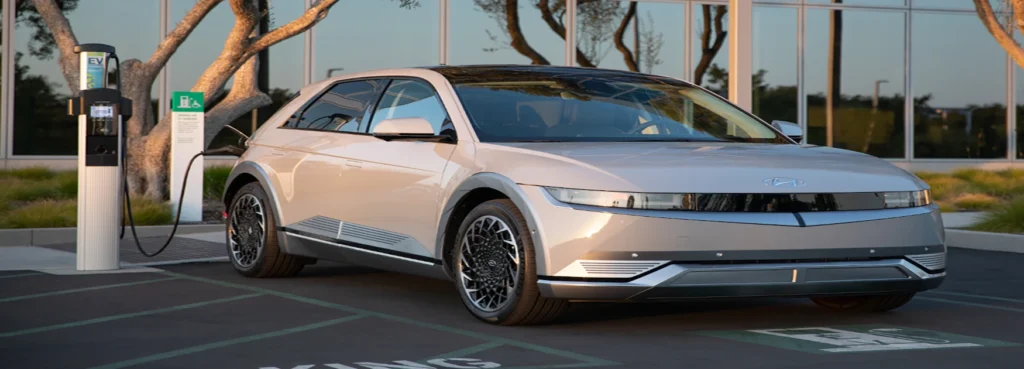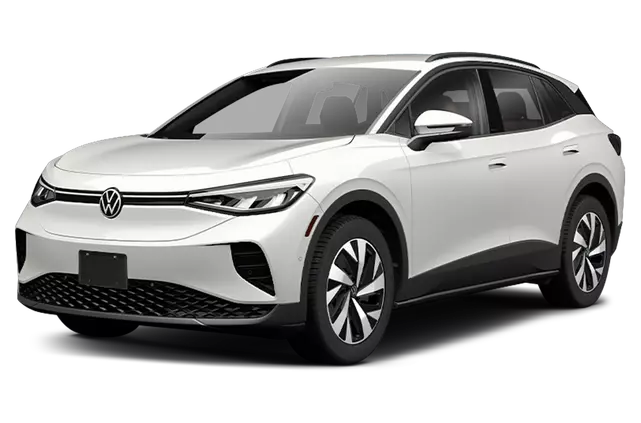Are electric cars truly becoming more affordable for everyday Americans, or is it just wishful thinking? Well, brace yourself because the answer might surprise you. With rapid technological advancements and a push towards sustainability, electric vehicles are undergoing a remarkable transformation, making them increasingly accessible to the masses.
Featured Image credit: Forbes
“But how?” The secret lies in breakthroughs like improved battery technology and economies of scale. These innovations have not only enhanced performance but also brought down production costs, allowing manufacturers to offer electric cars at more competitive prices.
“Is that all?” Not quite! Government incentives play a pivotal role by providing tax credits and rebates, making owning an electric car easier on the wallet. With the urgent need for eco-friendly transportation and the unpredictability of fuel costs, electric cars are now achieving a level of affordability that aligns with the aspirations of a broader demographic.
So Let’s dive into this electrifying topic – exploring how technological leaps, supportive policies, and evolving market dynamics pave the way for everyday Americans to embrace eco-friendly transportation options without breaking their budgets.
Technological Advancements
One key factor driving down the cost of electric vehicles (EVs) is continuous technological advancements. In particular, improvements in battery technology have played a crucial role. Lithium-ion batteries, which power most modern EVs, have become cheaper to produce while offering higher energy density and longer ranges.
Moreover, research and development efforts by automakers and tech companies are leading to breakthroughs in solid-state batteries. These next-generation batteries promise even greater energy storage capacity at a lower cost than current lithium-ion alternatives.
Additionally, advancements in manufacturing processes are contributing to cost reductions by streamlining production lines and improving overall efficiency. As these technologies continue to evolve rapidly, prices are expected to decline further as economies of scale kick in.
Government Incentives
Government incentives are vital in making electric cars more affordable for everyday Americans. Federal tax credits provide financial relief for buyers who choose an electric vehicle over traditional gasoline-powered ones.
The federal government offers up to $7,500 as a tax credit on purchasing or leasing new qualifying EVs based on battery size and range capability. State governments also offer additional incentives, such as rebates or grants, that can further reduce the upfront costs associated with buying an electric car.
Furthermore, some local municipalities provide various perks like discounted parking rates or access to HOV lanes exclusively reserved for EV owners – creating additional value propositions beyond initial affordability considerations.
These incentives make electric cars financially attainable for many Americans and encourage the EV market’s growth, leading to more competition and further driving down prices.
Environmental and Health Benefits
In addition to their affordability, electric cars offer significant environmental and health benefits. These advantages make them a compelling choice for Americans concerned about sustainability and public well-being.
Electric vehicles produce zero tailpipe emissions, meaning they don’t release pollutants like carbon dioxide (CO2) or nitrogen oxide (NOx) into the atmosphere. By reducing greenhouse gas emissions, electric cars help combat climate change and improve air quality in urban areas, where pollution from traditional vehicles is a major concern.
Furthermore, eliminating exhaust fumes from electric cars contributes to better respiratory health for drivers and pedestrians. Reduced exposure to harmful pollutants can lead to lower rates of respiratory illnesses such as asthma and lung cancer.
By choosing an electric car, individuals can actively participate in creating a cleaner environment while promoting healthier communities for themselves and future generations.
Declining Battery Costs
Battery costs have been a significant barrier to affordable electric vehicles. However, there has been a remarkable drop in battery prices in recent years. According to research conducted by BloombergNEF, lithium-ion battery pack prices fell from 1100per kilowatt_hour(KWH) in 2010 to just 137 per kWh in 2020 – an astounding 87% decrease.
This decline is primarily attributed to economies of scale as production volumes increase and manufacturing processes become more efficient. Additionally, increased demand for batteries driven by automotive and energy storage applications has led to further cost reductions.
As battery costs continue their downward trajectory, automakers can pass on these savings to consumers through lower-priced electric vehicles. This trend makes owning an electric car increasingly viable for everyday Americans who previously found them financially out of reach.
Increased Model Availability
Another key development that has contributed to the affordability of electric cars is the increasing availability of models across various price ranges. In the early days of EVs, choices were limited and predominantly focused on luxury or high-end options.
However, automakers have recognized growing consumer demand for affordable electric vehicles and are expanding their offerings accordingly. Today’s market boasts various models at varying prices that cater specifically to budget-conscious buyers.
Established automakers such as Nissan with their LEAF model or Chevrolet with its Bolt EV provide reasonably priced options for everyday commuting needs. Additionally, newcomers like Tesla’s Model 3 have gained popularity due to its competitive pricing, impressive performance, and features.
The influx of diverse models ensures that consumers have ample choices when buying affordable electric cars without compromising their preferences or lifestyle requirements.
Charging Infrastructure Expansion
One common concern among potential EV owners is access to charging infrastructure. However, the growth of electric car sales has spurred investments in charging networks across the country.
Public and private entities are rapidly expanding charging stations in urban areas, along highways, and even at workplaces or residential complexes. This expansion ensures EV owners have convenient access to charging facilities wherever they go, eliminating one of the barriers to adoption.
Furthermore, advancements in fast-charging technology have significantly reduced charging times. Some newer models can achieve an 80% charge in as little as 30 minutes. As this infrastructure continues to expand and improve, range anxiety becomes less of a concern for everyday Americans considering purchasing an electric car.
Lower Operating and Maintenance Costs
Electric cars offer significant advantages in operating and maintenance costs compared to traditional gasoline-powered vehicles. These savings can make electric cars more affordable for everyday Americans in the long run.
One major benefit is the lower cost of fueling an electric car. Electricity prices are generally more stable and predictable than fluctuating gasoline prices, allowing owners to budget their transportation expenses more effectively. Additionally, electricity tends to be cheaper per mile traveled than gasoline, resulting in considerable savings over time.
Maintenance costs for electric cars are also typically lower. Electric vehicles have fewer moving parts compared to internal combustion engines, reducing the chances of mechanical failure or breakdowns. This means less frequent visits to mechanics and lower repair bills.
Furthermore, electric cars don’t require oil changes or regular tune-ups like conventional vehicles do. The absence of these routine maintenance tasks translates into additional cost savings for owners.
The Second-Hand Electric Car Market
As electric cars become more popular and affordable, the second-hand market for these vehicles is also growing. This presents an excellent opportunity for everyday Americans to own an electric vehicle at a lower cost.
One advantage of buying a used electric car is the reduced upfront price compared to purchasing a brand-new vehicle. While new electric cars may still be out of reach for some consumers, the second-hand market offers more accessible options.
Moreover, many government incentives and tax credits that apply to new electric car purchases can also transfer to used EVs. This further helps reduce the cost burden on buyers.
Additionally, with advancements in battery technology and longer-lasting batteries, concerns about battery degradation in second-hand EVs are diminishing. Many manufacturers provide warranties on their batteries even when sold as pre-owned vehicles.
Final Thoughts
The affordability of electric cars for everyday Americans is no longer just a distant dream but becoming a reality thanks to technological advancements, government incentives, declining battery costs, increased model availability, and expanding charging infrastructure.
Electric cars offer financial benefits to individual consumers and contribute to a cleaner, more sustainable transportation future for society. The ongoing commitment to innovation, policy support, and market competition promises to further enhance the affordability and appeal of electric cars in the years to come.
With these positive developments on multiple fronts driving down costs associated with owning an EV and growing awareness about environmental benefits, we won’t be long before we witness widespread adoption of electric cars among everyday Americans leading us towards a greener transportation future.


